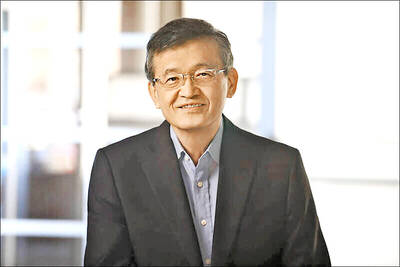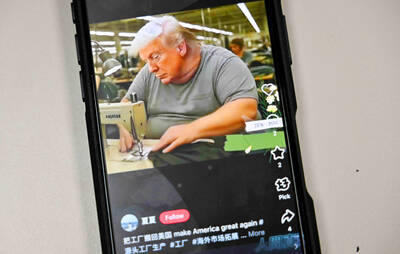Beijing has readied a plan to restrict exports of rare-earth elements to the US if needed as both sides in the trade dispute dig in for a protracted dispute, people familiar with the matter said.
The Chinese government has prepared the steps to use its stranglehold on the critical minerals in a targeted way to hurt the US economy, the people said.
The measures would likely focus on heavy rare-earth elements, a sub-group of the materials where the US is particularly reliant on China.
The plan can be implemented as soon as the government decides to go ahead, they said, without giving further details.
The development follows a flurry of threats this week from state media and officials, highlighting the potential use of the strategic minerals as a trade weapon. China produces about 80 percent of the world’s rare earths and an even higher proportion of the elements in their processed forms.
“Currently, it’s still just a possibility that China may ban or do some kind of restrictions, but if it does happen, then we believe prices of rare earths will surge,” Shanghai Metals Market researcher Racket Hu said in a Bloomberg TV interview citing what happened in 2010 when China curbed shipments to Japan.
The Chinese National Development and Reform Commission, its top economic planner, did not immediately respond to a fax seeking comment on the plan.
Shares in firms involved in the rare-earth elements industry rallied yesterday, with China Northern Rare Earth Group High-Tech Co (北方稀土) rising as much as 5.9 percent to the highest level in a year, while China Minmetals Rare Earth Co’s (中國五礦) stock gained as much as 4.4 percent. In Sydney, stock in Lynas Corp took gains this month to 51 percent.
Heavy rare-earth elements include dysprosium, used in magnets commonplace in almost all cars and many consumer goods. The group also has yttrium, used in lighting and flat screens, as well as ytterbium, which has applications in cancer treatments and earthquake monitoring.
Any action on rare earths would deepen a confrontation that is roiling markets and damaging global growth.
The effect of any restrictions would be significant and clearly signal that trade tensions are escalating, a research note from Goldman Sachs Group Inc said.
The elements are also in weaponry, amid a host of applications key to US supply chains. Rare earths are divided into two main categories, heavy and light, corresponding to atomic weight. Heavy rare earths are less common, and important for lasers, sonar and strengthening steel, among other uses.
For heavy rare earths, “China definitely dominates supplies and if China abandons those exports, I don’t think the US can find alternatives,” Hu said.
Dysprosium might be one of the more critical elements because of its use in permanent magnets, he said.
It is not clear what conditions would need to be met to trigger the restrictions, nor precisely how the curbs would be imposed, people familiar with the plan said.
Separately, the government is taking account of how the US might object to the measures at the WTO, they said.
A blockade on the supply of rare-earth magnets could have a devastating effect across swathes of the US’ economy, Technology Metals Research LLC said.
China produces 95 percent of the world’s output.

Intel Corp chief executive officer Lip-Bu Tan (陳立武) is expected to meet with Taiwanese suppliers next month in conjunction with the opening of the Computex Taipei trade show, supply chain sources said on Monday. The visit, the first for Tan to Taiwan since assuming his new post last month, would be aimed at enhancing Intel’s ties with suppliers in Taiwan as he attempts to help turn around the struggling US chipmaker, the sources said. Tan is to hold a banquet to celebrate Intel’s 40-year presence in Taiwan before Computex opens on May 20 and invite dozens of Taiwanese suppliers to exchange views

Application-specific integrated circuit designer Faraday Technology Corp (智原) yesterday said that although revenue this quarter would decline 30 percent from last quarter, it retained its full-year forecast of revenue growth of 100 percent. The company attributed the quarterly drop to a slowdown in customers’ production of chips using Faraday’s advanced packaging technology. The company is still confident about its revenue growth this year, given its strong “design-win” — or the projects it won to help customers design their chips, Faraday president Steve Wang (王國雍) told an online earnings conference. “The design-win this year is better than we expected. We believe we will win

Chizuko Kimura has become the first female sushi chef in the world to win a Michelin star, fulfilling a promise she made to her dying husband to continue his legacy. The 54-year-old Japanese chef regained the Michelin star her late husband, Shunei Kimura, won three years ago for their Sushi Shunei restaurant in Paris. For Shunei Kimura, the star was a dream come true. However, the joy was short-lived. He died from cancer just three months later in June 2022. He was 65. The following year, the restaurant in the heart of Montmartre lost its star rating. Chizuko Kimura insisted that the new star is still down

While China’s leaders use their economic and political might to fight US President Donald Trump’s trade war “to the end,” its army of social media soldiers are embarking on a more humorous campaign online. Trump’s tariff blitz has seen Washington and Beijing impose eye-watering duties on imports from the other, fanning a standoff between the economic superpowers that has sparked global recession fears and sent markets into a tailspin. Trump says his policy is a response to years of being “ripped off” by other countries and aims to bring manufacturing to the US, forcing companies to employ US workers. However, China’s online warriors